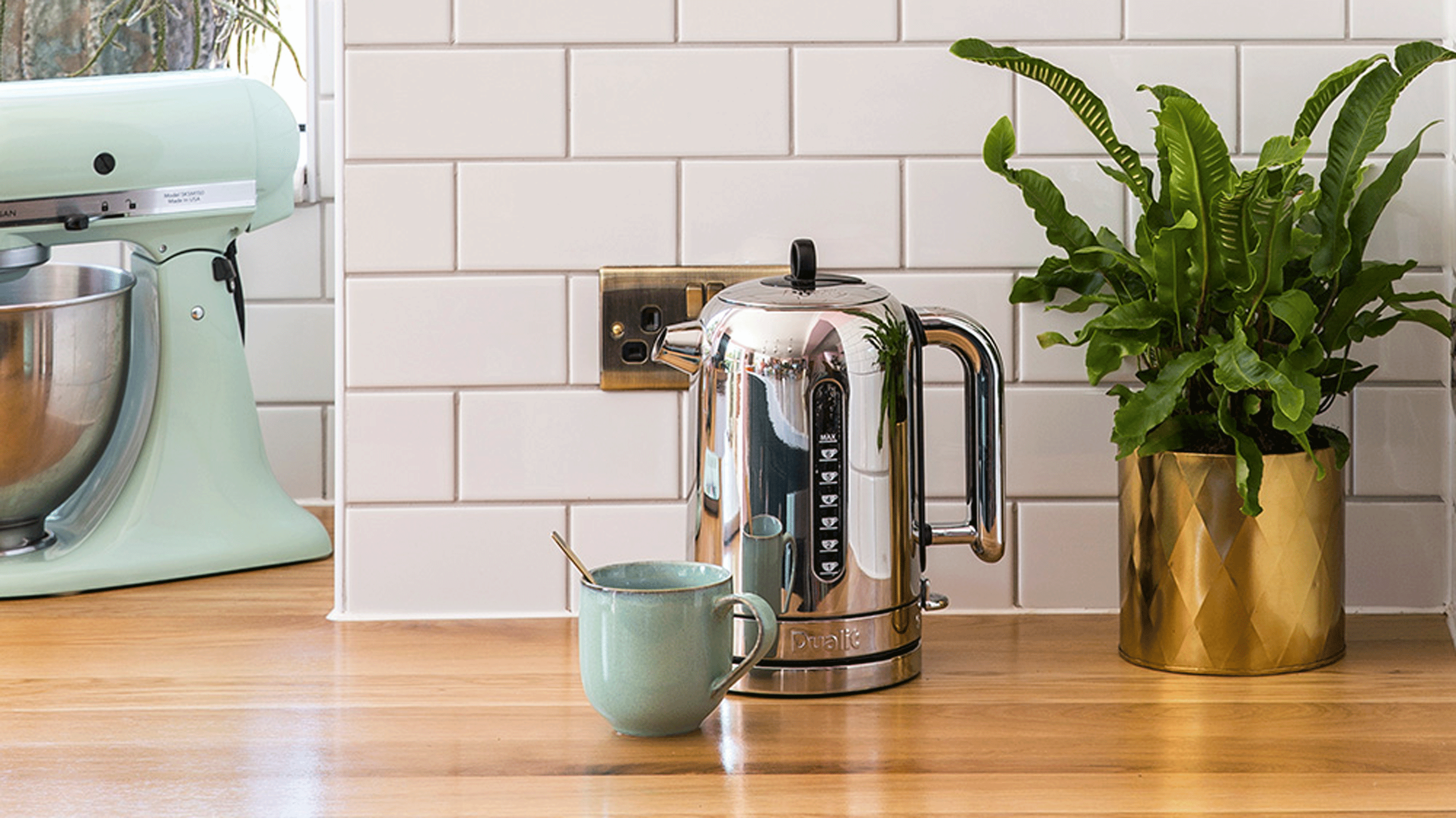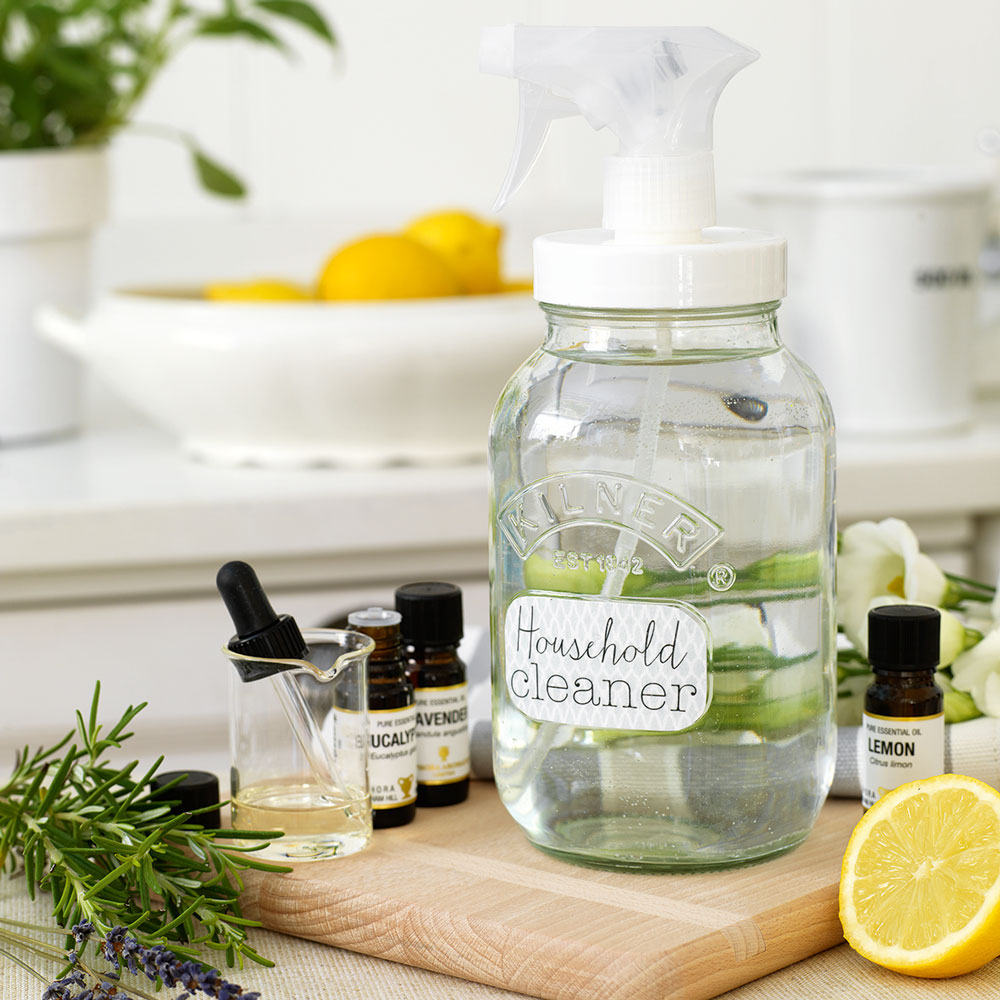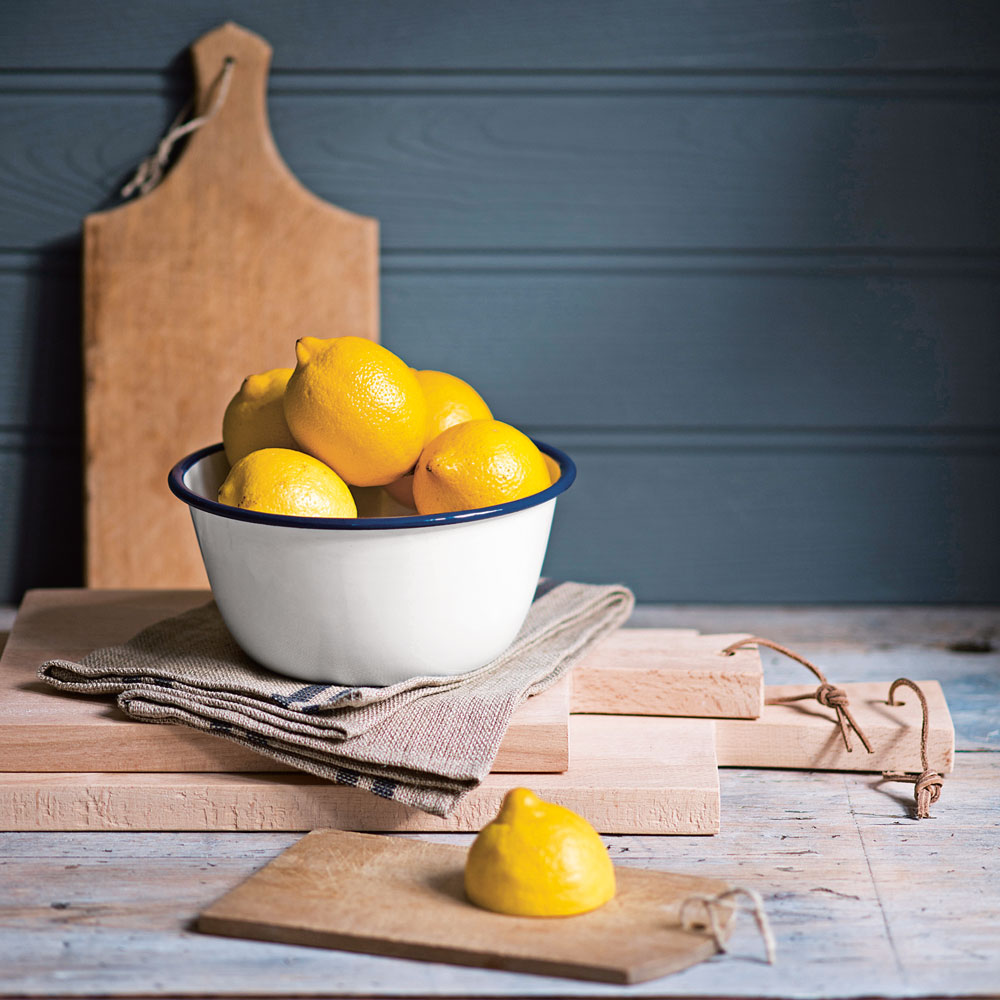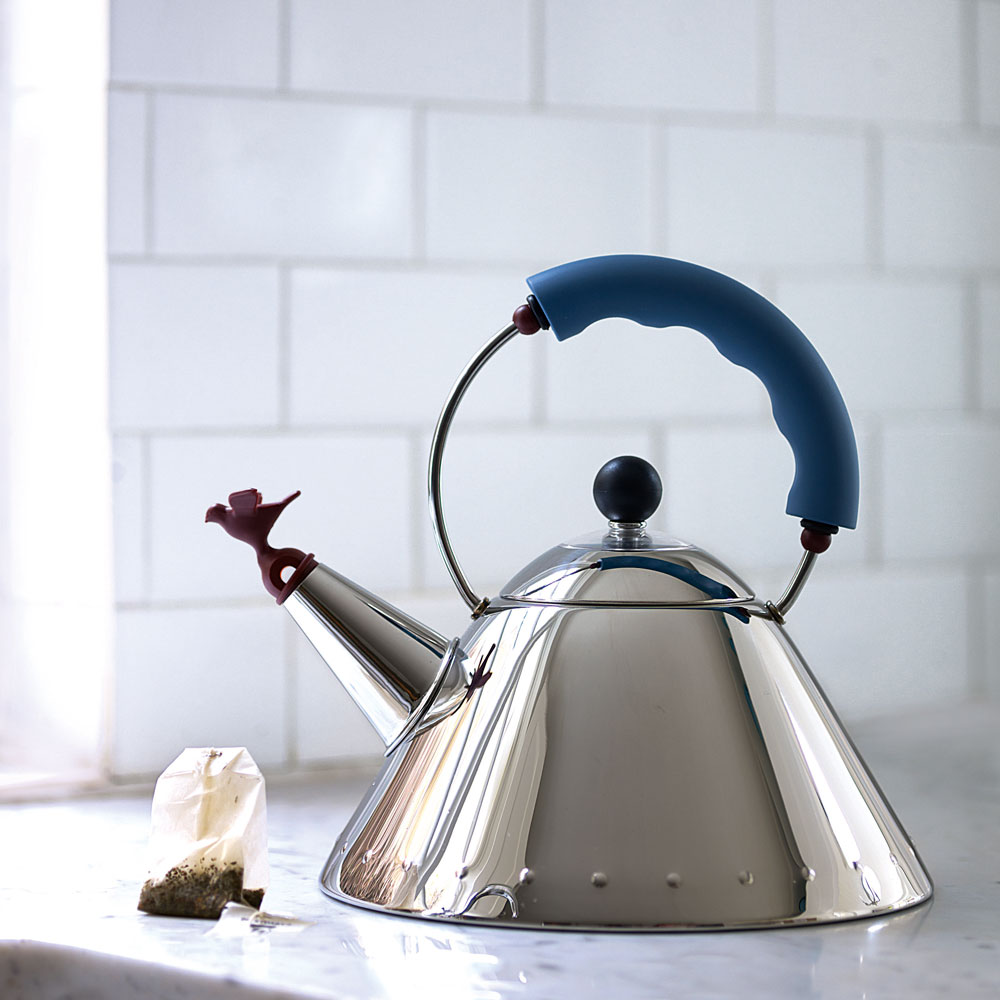How to clean inside a kettle with lemon, vinegar and other easy methods
Get rid of limescale and leave your kettle gleaming

Lauren Bradbury
We’re a nation of tea lovers, and there’s a high chance that you know exactly how you like your tea. But if you want to keep your builder’s brew limescale-free, you’ll want to know how to clean a kettle.
Unfortunately, even the best kettles on the market aren’t immune to limescale or grime build-up. Keeping this all-important kitchen appliance in tip-top shape requires some maintenance, and while it’s important to clean the inside of your kettle, it’s also important to clean the outside.
That’s why we’ve put together the ultimate guide on how to clean a kettle, from all-natural cleaning methods to shop-bought solutions that will leave your kettle sparkling… and your cup of tea exactly how you like it.
How to clean the inside of a kettle
Limescale in your kettle ultimately affects the inner workings of the appliance, furring up the insides and forcing it to work harder to heat up. So, if you want to save energy at home, you should take this as your sign to clean the inside of your kettle as soon as you can.
How to clean a kettle with vinegar
White vinegar can be used to clean many things, but did you know that your kettle is one of them? Just follow the steps below for amazing results:
- Using equal parts water and white vinegar, at Amazon, fill the kettle three-quarters full.
- Bring to the boil and allow to cool.
- Drain the water, rinse several times.
- Boil again so there’s no aftertaste.

How to clean a kettle with lemon

The most unexpected products can be used in your home. And lemon is just one of them. This fruit is high in citric acid, making it a powerful cleaning agent, ideal for kettles that have seen better days. It is also a favourite method of cleaning expert Lynsey Queen of Clean. Here is the technique she uses for descaling her kettle
- Fill the kettle half full with lemon juice. You can pick up a bottle in the cleaning aisle.
- Fill the rest of the kettle up with water.
- Boil it and let it sit for 30 minutes until the limescale starts to dislodge.
- Pour out the lemon and water, and rinse.
For kettles that haven’t been descaled in a long time, you may need to repeat this process a few times to get rid of most of the limescale. Alternatively, you can leave the vinegar to soak as well.
'Both of those work extremely well, and you just pour it away and the limescale bits from the bottom just come away in big chunks, so it's quite satisfying to see,' adds Lynsey. Lemon can also be used to clean a microwave.
How to clean a kettle with baking soda
A common addition to any household cupboard, baking soda is also one of the best natural cleaning products money can buy. And this is how you can clean a kettle with baking soda:
- Put 1-2 teaspoons of baking soda into the kettle, and half-fill the kettle with water.
- Boil the kettle, and then allow to cool.
- Pour out the water, and then rinse with fresh water until you remove all traces of baking soda.
How to clean the outside of your kettle

Don't forget to give the exterior of your kettle a little cleaning TLC as well, as that's the part you'll see every day as you make your favourite hot drinks.
- Use a multi-surface cleaner to clean the outside if you have a stainless steel kettle.
- Then a dab of baby oil on some kitchen roll will buff it to a streak free shine, or use a specialist stainless steal cleaner.
Will you be trying one of these methods for a spotless kettle, inside and out?
How to descale a kettle
Limescale, or calcium carbonate, is present in hard water, and the flakes get left behind when the water evaporates. It's not harmful but can make your tea taste metallic and give you flakes or a film on the top of your brew.
Our guide on how to get rid of limescale in a kettle has all of the info you need to know if you want to avoid harsh chemicals, but Debbie McIvor-Main, Marketing Manager at Dualit Ltd suggests using a professional limescale remover to finish the job properly.
'We recommend the Kilrock K descaler which usually takes between 15 minutes to 1 hour depending on the limescale build-up in the kettle.’ She also suggests using lemon juice, lime juice, vinegar or baking soda. But how often should you descale a kettle? Well, Debbie has the answers for that, too.
‘If you live in a soft water area, we recommend you descale your kettle every 2 months or every 100 cycles. If you live in a medium water area, we recommend you descale your kettle once a month or every 50 cycles. If you live in a hard water area, we recommend you descale your kettle at least once a month or every 25 cycles.’
How to prevent limescale in a kettle
Unfortunately, cleaning your kettle once won’t keep the appliance limescale-free forever. But there are ways to prevent limescale build-up in a kettle, and they’re fairly easy tips to follow:
Use a water filter or softener: Limescale is caused by hard water, which is why softening or filtering your tap water will always work in your favour. Installing a water softener into the plumbing of your house is a long-term solution to hard water but is fairly expensive. A cheaper option is to use a filter like this BRITA Filter Jug from Amazon - but you will have to replace the cartridges every so often.
Empty the kettle after each use: If you’re on a mission to save water, you’ll know how annoying it can be when you pour too much water into a kettle. But keeping this water in the kettle after it's boiled could be making the limescale build-up in your kettle even worse. Because of this, it’s important to empty the kettle of water after every use. You should also dry it thoroughly after each use.
Clean the kettle regularly: It may sound like common sense, but cleaning your kettle regularly is the easiest way to prevent limescale build-up in a kettle. Ideally, you should aim to clean your kettle at least once a month.
FAQs
How do you clean the inside of a kettle?
There are various ways to clean the inside of a kettle, but if you want a tried-and-tested household kettle cleaner, you should opt for lemon or white vinegar.
To clean the inside of a kettle with lemon, fill half of the kettle with lemon juice and then fill the rest up with water. Then, boil the kettle and wait for it to cool. Finish by rinsing it with dish soap and water.
To clean the inside of a kettle with white vinegar, fill three-quarters of the kettle with equal parts white vinegar and water. Boil the kettle and allow it to cool before emptying the kettle and rinsing it with water. Then, boil the kettle again to get rid of the vinegar taste.
What's the best way to descale a kettle?
Although you can use a professional descaling product to descale a kettle, many people find that the quickest and easiest way to descale a kettle is to use white vinegar.
To do this, fill a kettle three-quarters full with equal parts water and vinegar and then boil. It’s important that you leave the kettle to cool for around 30 minutes before emptying it and then rinsing it. You should see the limescale disappear - but you may need to repeat this a few times if the limescale is proving to be stubborn.
Then, rinse a few times before boiling the kettle once more to get rid of the acidic aftertaste.
Will cleaning my kettle save energy?
'You can save money on your household bills by using your kettle more effectively,' says a spokesperson at Oust. 'Having limescale in your kettle is a common issue and affects around 60% of the UK. Once hard water is heated, it creates a chalky off-white crust called limescale.
'Limescale build-up in kettles slows down their efficiency so they will use more energy to boil the same amount of water. Descale your kettle and restore your appliance in eight minutes using Oust All Purpose Descaler, which removes limescale debris on the internal coils of the kettle and maintains shorter boil times.
Now you know how to clean a kettle, you can make the perfect cuppa every time.
Get the Ideal Home Newsletter
Sign up to our newsletter for style and decor inspiration, house makeovers, project advice and more.
Jennifer is the Deputy Editor (Digital) for Homes & Gardens online. Prior to her current position, she completed various short courses a KLC Design School, and wrote across sister brands Ideal Home, LivingEtc, 25 Beautiful Homes, Country Homes & Interiors, and Style at Home.
- Lauren BradburyContent Editor (House Manual)
-
 Wood drenching is the calming new twist on the colour drenching trend – here’s how to make the look work in your home
Wood drenching is the calming new twist on the colour drenching trend – here’s how to make the look work in your homeIt’s easier than ever to embrace natural materials
By Maddie Balcombe
-
 Aldi is launching a £200 day bed with four different features - its sleek design is suited to the whole family
Aldi is launching a £200 day bed with four different features - its sleek design is suited to the whole familyYou don't want to miss out on this Specialbuy
By Kezia Reynolds
-
 How to set up a drip watering system that saves water and a lot of effort
How to set up a drip watering system that saves water and a lot of effortKeep your plants hydrated (and your water bill down) with this clever garden watering solution
By Natalie Osborn